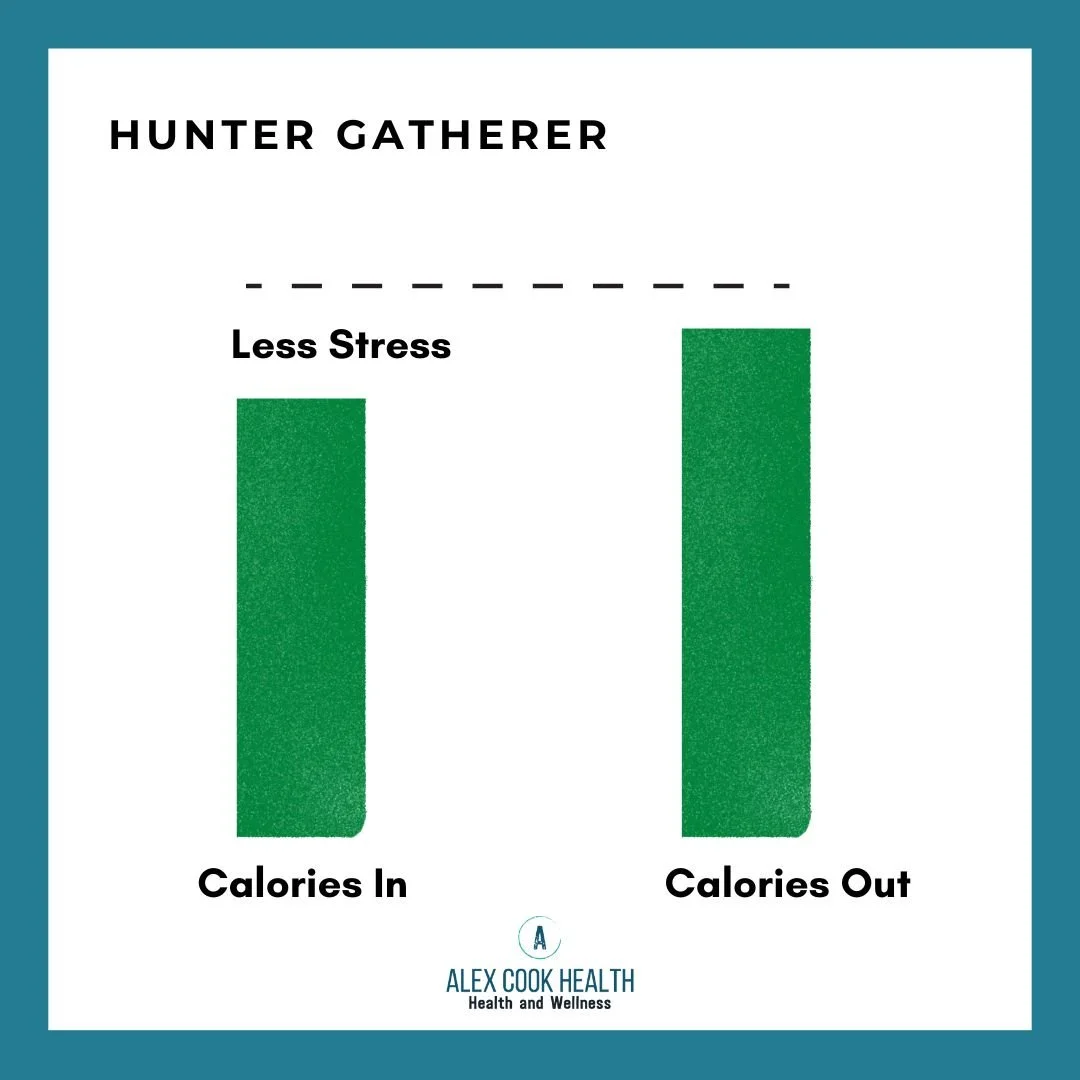Ditch the Diet: A Path To Sustainable Fitness
Last week we discussed:
-The typical dieters approach
-Why it is not effective long term
-Why you are failing using it
-How your body is telling you it is unsustainable
A quick visual recap shows us that the dieter restricts calories while also increasing exercise to a large degree. It looks like this. The gap of input vs output is so big that it causes stress. This stress shows up in mixed bio-feedback signals. You can read more on this in last weeks blog. Check it out HERE
This week we are going into more sustainable approaches to fitness, fat loss and creating optimal health.
The Hunter Gatherer. This is an eat less, exercise less approach (ELEL.)
Here you mimic what's been historically demonstrated as far as lifestyle. In the past we didn't have food so readily available and accessible to us. We had to hunt and forage for our meat, fruits, plants. We would spend large stretches of the day active and on the move and we ate relatively sparingly. There was very little strenuous exercise or movement unless building or running from predators.
Today, this would look like 10k steps a day, 2 or 3 days in the gym with light to moderate resistance training and just enough calories to support that. Visually these people tend to be more slender, not a ton of muscle, but also very healthy metabolically and are generally pretty lean.
The reason this is a sustainable approach is because the input (calories) are relatively modest to low but the output (exercise, calories burned) is also relatively low. This creates more balance between the energy systems which in return creates more safety and less stress.
Remember, less stress in regards to input vs output will keep the metabolism happy.
From here we also have the Athlete which takes an eat more, exercise more (EMEM) approach. This too, is dependent on keeping the caloric gap low. However, unlike the hunter gatherer approach it requires MORE exercise and MORE Food.
Olympic swimmer Michael Phelps is known for his 10,000 calorie eating days but is also known for his insane work ethic where he'd burn those calories as well ( Hence, his lean physique)
LeBron James is also known for eating a large amount of food, in fact, his diet has been documented as not even that "healthy" enjoying things like wine, fried fast foods, candy, etc.
He has the work ethic to make use of those calories (plus, superhuman genetics.)
In this approach, being in a slight caloric surplus will help to build muscle. You can also be in a slight deficit here as well, the key either way is managing the gap of calories consumed vs burned.
In Summary
Either the hunter gatherer or athlete are sustainable approaches to fat loss or muscle gain. The key concepts of both are built around managing input vs output and biofeedback signals.
Remember that Sleep, Hunger, Mood, Energy and Food Cravings (SHMEC) will tell you MORE about progress and sustainability than the scale will.
This is perhaps the most important piece to remember in all of this.
Losing weight but SHMEC are out of whack? Back to the drawing board.
Not losing weight but SHMEC are ok? Back to the drawing board. Calories are likely too high.
Not losing weight and SHMEC are not ok? Possible hormonal or metabolic stressors going on. Look for support.
Losing weight and SHMEC are good? don't change a thing. You're doing great.
Let me know if this was helpful.
Until next week.




